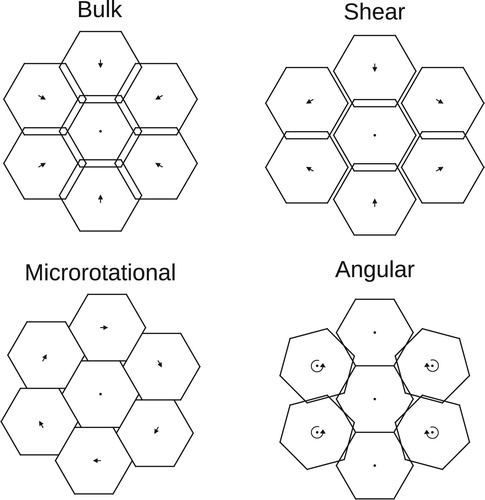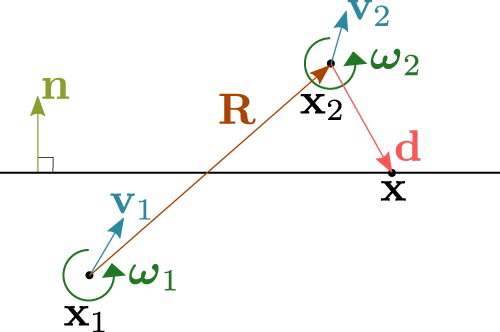Figures & data
Figure 2. Periodic tiling of irregular hexagonal grains as considered by Wheeler [Citation13]. Note that the centroid of each grain, and the midpoint of each grain boundary is a rotation centre of order two (the tiling is invariant under a rotation by 180 about these points). The symmetry of the tiling is the wallpaper group p2. All triple junctions in the tiling are indistinguishable owing to this symmetry.
![Figure 2. Periodic tiling of irregular hexagonal grains as considered by Wheeler [Citation13]. Note that the centroid of each grain, and the midpoint of each grain boundary is a rotation centre of order two (the tiling is invariant under a rotation by 180∘ about these points). The symmetry of the tiling is the wallpaper group p2. All triple junctions in the tiling are indistinguishable owing to this symmetry.](/cms/asset/2e568ce8-6b31-4f6f-bd05-db0be1f98a13/tphm_a_1946191_f0002_oc.jpg)
Figure 3. Examples of the different modes of deformation for a tiling of regular hexagons. In each case the frame of reference is such that the central grain is stationary (neither translating nor rotating). Straight arrows indicate the velocities of the centres of each grain, curved arrows indicate the sense of grain rotation. The hexagonal grains have been displaced by finite amounts to show their motions, but the theory described in the text concerns infinitesimal motions only. Regions of overlap and gaps between grains must be accommodated by plating out or removal of material. Bulk deformation involves purely plating; there is no sliding between grains. Shear deformation involves both plating and sliding. Microrotational deformation involves pure sliding; in the example shown none of the individual grains rotate, but the grain centres undergo a rotation. Angular deformation occurs when there is relative rotation between neighbouring grains; such deformation involves both plating and sliding.


